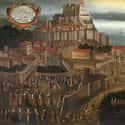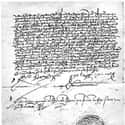-
(#4) Mexican Repatriation In The 1930s - Around 2 Million
Before Trump’s election promise to deport millions of Mexicans from the United States, President Herbert Hoover succeeded in expelling about two million Mexican Americans in the early 1930s. This mass deportation became known as Mexican Repatriation, and remains a blight on America's history. What’s even more disturbing is that more than half of those expelled were American citizens, born in the United States.
During the Great Depression, there was a growing sentiment among white Americans that Mexicans were taking jobs and resources away from “true” citizens, a sentiment that is disturbingly echoed in the 21st century. Many believed that even though the majority of these Mexicans were citizens, a true American citizen had to be white. There were major roundups of Mexican workers in workplaces and in public. This massive deportation tore apart families and placed many Mexican- American citizens in a country in which they’d never even stepped foot.
-
(#6) Expulsion Of The Moriscos - About 500,000
About a century after tossing out the Jews, the Spanish decided to eliminate the Muslim population as well. King Phillip III signed a decree in 1609 to expel all the “Moriscos”- a derogatory term meaning “little Moors,” and used to describe the descendants of Spain’s Muslim population – from Spain. The Moors were given three days to pack their belongings and board ships heading for North Africa or the Ottoman Empire. By 1614, every Moor descendant was gone, and Islam disappeared from the Iberian Peninsula. The Spanish Muslim population went from 500,000 to zero within 100 years. The expulsion of the “moriscos” was considered a Holocaust.
Despite the violent deportation, Moors had a lasting effect on Spanish culture, especially in Andalucía. Flamenco music has distinguishable Arab roots, as does much of the architecture throughout southern Spain, the Alhambra being a prime example.
-
(#5) Operation Wetback - 1.1 Million
In 1954, barely 20 years after the Mexican Repatriation, President Eisenhower oversaw the deportation of an estimated 1.1 million undocumented Mexican immigrants. Trump referred to Eisenhower’s “Operation Wetback” as a success during his campaign.
"The Eisenhower mass deportation policy was tragic," said Alfonso Aguilar, of the American Principles Project’s Latino Partnership.
"Human rights were violated. People were removed to distant locations without food and water. There were many deaths, unnecessary deaths. Sometimes even US citizens of Hispanic origin, of Mexican origin were removed. It was a travesty. It was terrible. Immigrants were humiliated. So, to say it's a success story is ridiculous. It shows that Mr. Trump doesn't know what he's talking about."
-
(#12) Expulsion of the Acadians - About 11,500
During the French and Indian War, the British deported some 11,500 Acadians from modern day Canada’s maritime provinces: Nova Scotia, Prince Edward Island, and New Brunswick. The Acadians were the descendants of French Colonists who settled in those parts of Canada. Even when their land was taken by the British after 1713, the Acadians were granted relative autonomy. But Britain grew suspicious of rebellion after the Acadians refused to sign an oath of allegiance to the crown.
In what became known as the Great Upheaval or Great Expulsion, under orders from governor Charles Lawrence, British soldiers pillaged Arcadian land, burning farms and crops. Thousands were shipped off to various English colonies throughout modern-day America, while others landed in France and the Caribbean. Thousands died on the voyage, in overcrowded, disease-ridden ships.
Acadians were not sent to Louisiana, though many were attracted to the place because of their familiarity with the language. Those who ended up there helped develop Cajun culture. They were allowed to return to Acadia in 1764.
-
(#7) Spanish Expulsion Of The Jews - About 200,000
The year 1492 was infamously portentous for the indigenous people of the western hemisphere, though also a very bad one for Jewish residents of Spain. As Christoper Columbus wrote in his diary:
“In the same month in which their Majesties [Ferdinand and Isabella] issued the edict that all Jews should be driven out of the kingdom and its territories, in the same month they gave me the order to undertake with sufficient men my expedition of discovery to the Indies.”
Spanish Jews either had to convert to Catholicism or leave the country under Isabella’s Alhambra Decree. Some 200,000 Jews are thought to have been forced out of Spain, many of whom ended up in North Africa, Turkey, Italy and the Netherlands.
As of 2014, Spain offers reparations to the descendants of Jews expelled from country: anyone who can trace ancestry to Sephardic Jews is granted Spanish citizenship.
-
(#1) The Partition Of India And Pakistan - Around 15 Million
As a final, brutal middle finger to the Indian subcontinent, the British government partitioned the region into two separate nations when colonial rule ended in 1947: India and Pakistan. Hindus and Muslims were instantly pitted against each other; the latter formed the majority in Pakistan, the former did so in India.
The division led to one of the greatest human migrations in history. Around 15 million people fled their homes as widespread violence between the two religious groups claimed the lives of around one million people.
While the mass movement of people across the borders of India and Pakistan is typically desribed as a migration, it occurred as a result parties beyond local control creating an environment of hostility and violence that essentially forced large portions of the population to leave ancestral homelands to remote parts of the subcontinent to avoid persecution, harassment, beatings, and death. The British government inadvertantly presented tens of millions of people with an ultimatum - leave, or suffer and maybe die.
New Random Displays Display All By Ranking
About This Tool
In the past few decades, the United States has expelled a large number of illegal immigrants at an alarming rate. During the peak period, more than 400,000 people were deported, most of whom were Mexicans. This is not the first deportation in human history, and it will definitely not be the last. In every historical period, there have been aggressions to expand the territory. The rulers will carry out genocide and mass expulsion operations, which will bring catastrophic destruction to the culture and life of countless indigenous people.
The random tool tells stories of the 13 biggest mass deportations in human history, the most infamous should be the Mexican Repatriation in the 1930s, more than 2 million people were forced to leave.
Our data comes from Ranker, If you want to participate in the ranking of items displayed on this page, please click here.
















